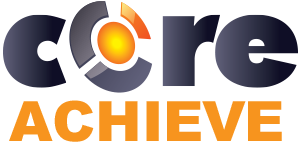Including Storytelling In eLearning
December, 13 2022
Other posts:
Enhancing Team Dynamics for Effective Group Decision-Making with LMS Integration
Organizations increasingly rely on collaborative efforts to solve complex problems, innovate, and adapt to change, but how do we ensure that collaboration is happening.
Maximizing Small Business Potential with Training Technology
Training technologies can push small businesses ahead of their competitors, but what are the factors that go into choosing the right technology?
Unlocking Employee Potential: The Transformative Benefits of an Interactive Learning Management System (LMS)
Interactive training allows for unlocking employee potential, but how is it done?
Building a Robust Sales Pipeline with Training
Every organization wants a streamlined sales pipeline, but building one requires a series of interlocking activities with one of the most important being training.
Strategies for Adapting In-Person Training to Online Platforms
Online training is one of the most flexible ways of delivering training across organizations, but how do you even begin to adapt in-person training into online?
How can we utilize the power of storytelling in a new, disruptive eLearning environment?
The act of storytelling has been a pivotal part of learning throughout history. So much so that historian Yuval Noah Harai, author of Sapiens, argues that storytelling is what allows humans to be the dominate species. Yet, whether it be around a fire or exasperated body language, storytelling has always had a physical motif. How, then, can we harness the power of storytelling for online learning?
Benefits of Storytelling for eLearning
Before we cover the “how” let’s look at the “why” of storytelling. Why would one want to include storytelling into their eLearning content?
Stories Are More Likely to Engage Learners
Storytelling gives learners more personal reasons to care. It’s too easy for eyes to glaze over and for the mind to drift whenever trying to learn, because there is no investment. Including stories naturally will increase the investment of your learners by engaging their empathy, thus increasing their investment.
Stories Resonate More
People project themselves into stories, after all, why else would we get scared from someone recounting a creepy tale? Storytelling, whenever done well, always the listener to immerse themselves into a story—causing the message to happen to them, not told to them.
Stories Create an Emotional Connection
Emotions are the reasons why stories have such a sway over us. This doesn’t mean that stories can’t be impactful logically, but emotion often has a much greater impact. This isn’t a bad thing for your message, however, as memories are tied so deeply with emotions that if you strike the right chord, your learner may never forget the message.
Tips for Online Storytelling
Thankfully, integrating stories into eLearning isn’t as daunting as it might seem. As is the case with most everything, storytelling has evolved into its own online niche, setting new customs.
Use The Right Equipment
To deliver truly effective storytelling, you’ll want to use a platform that includes a variety of different media options (audio, video, images, slide shows, etc.), like CoreAchieve, as all these pieces will allow you to accurately represent your story.
Including different forms of media will not only increase the engagement, but as stated above, it will help illustrate story elements like setting or characters.
Remember: Setting, Character, Conflict
Telling stories online still uses the primary elements of setting, character, and conflict. These elements can be used in any course. For example, if the course is on workplace safety, tell a story about a specific person, in the workplace, with the conflict being them not following safety regulations. Even in the most mundane of things, stories can be found.
Don’t Feel the Need to Rush
Often eLearning stories will span about three minutes and have a disposable protagonist, but it doesn’t have to be that way. Including many different three-minute stories cheapens the value of each story. Rather, make the story an overarching one and subdivide that story into as many stories as you need.0
Don’t Shy Away from Telling Your Stories
Professional storytelling typically is abstracted, disconnected from anyone one person. While this stylistic choice is not inherently bad for wide-scale messaging, it is less impactful with smaller and smaller groups of people. As such, an instructor should be willing to tell their own relevant stories. Knowing the source and having a story in detail will be more engaging to learners.
Avoid Being Preachy
It’s tempting to include the message of the story—especially online—to make sure everyone understands it. However, doing so often cheapens the impact of the stories and might stoke resentment. Save hammering home the message to the quizzes or assessments, not within the story itself.
Remember show, don’t tell.
Be Creative With the Tools You Have
Use tools like quizzes to make the story interactive, whatever answer the user puts in, the story will respond like-wise. This doesn't have to be complicated, CoreAchieve includes a system that makes creating branching paths simple. If it allows for interactions, make it interactive. Interactivity will super-charge your story and, thus, it's message.
Having Trouble Creating Storytelling Content?
Listen to more stories. That’s it. By doing this you’ll begin to see how others frame, execute, and deliver on their own messages, allowing you to experiment with what works and what doesn’t. Storytelling, like most other things, is a skill that can be fostered engaging with more stories. Crafting the perfect story will take time, yet given all the benefits, it’ll be worth it.
Get started with CoreAchieve for free.
Photo by Patrick Tomasso on Unsplash

Leave comment: